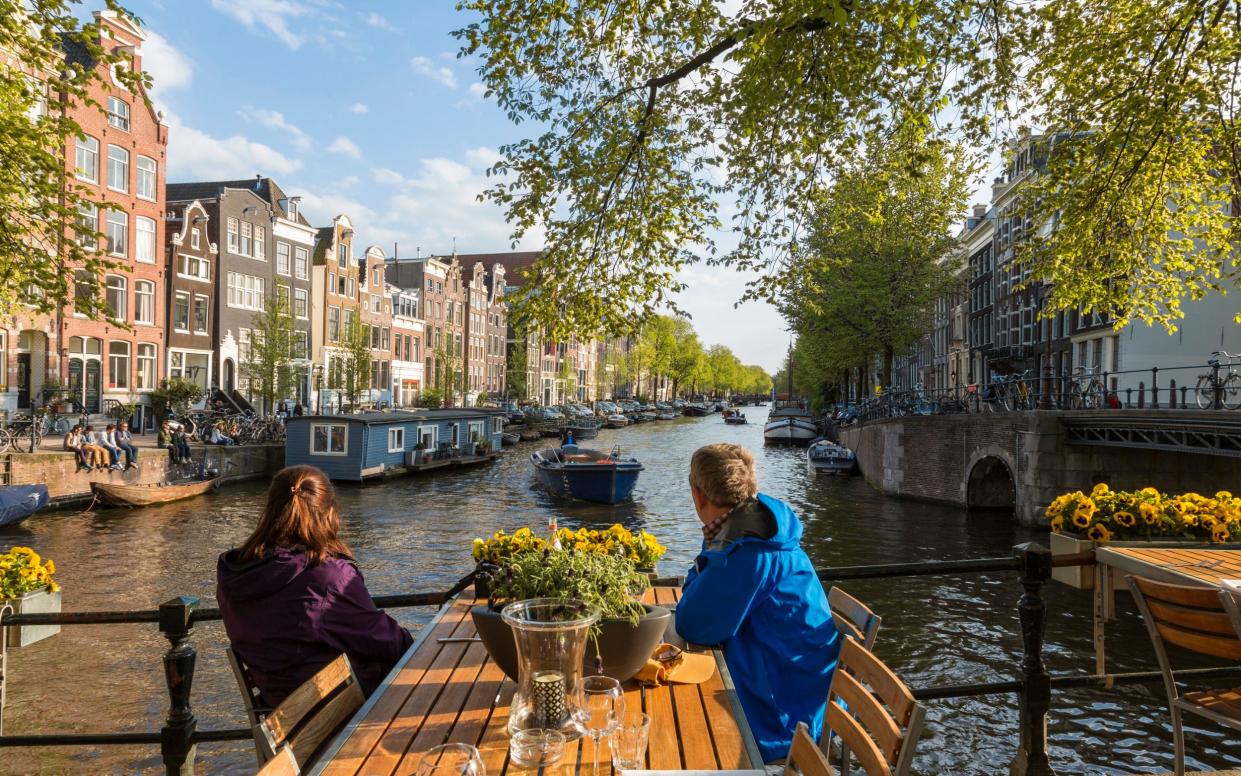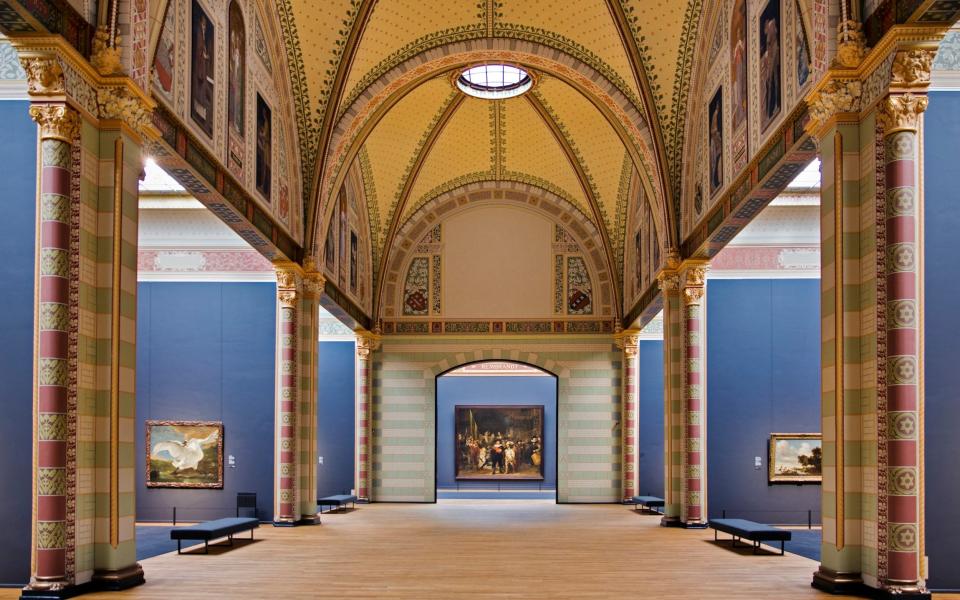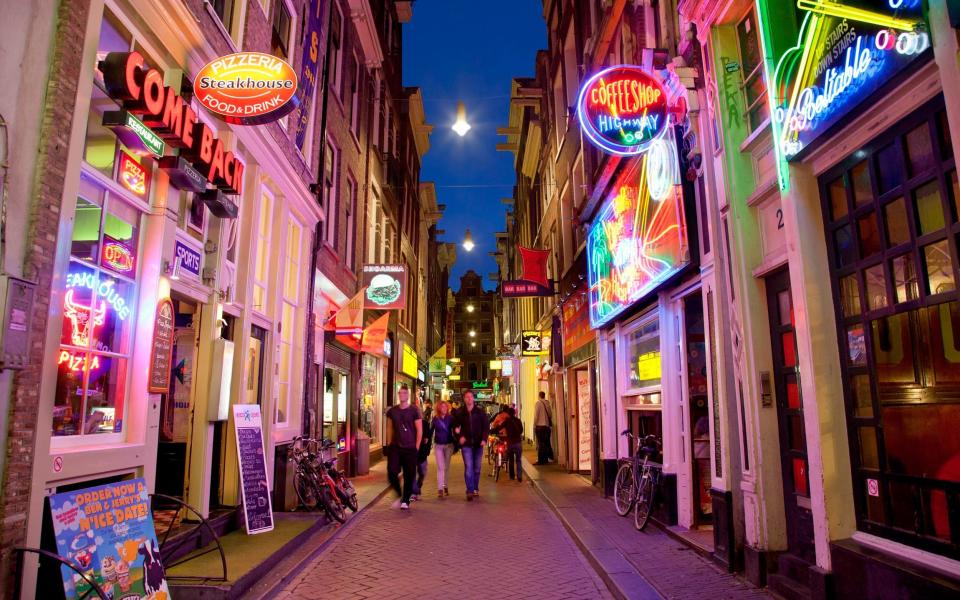Finally, Amsterdam is back on the table

Amsterdam is shedding corona restrictions like a burlesque dancer drops layers of clothing, retaining just a little something here and there to preserve decorum.
From September 22, visiting Britons will no longer need to quarantine on arrival, and from September 25 bars and restaurants can operate at full capacity, theatres and cinemas can properly re-open, and clubbers can dance till midnight – but all with the proviso that you have proof of vaccination or a negative Covid test no more than 24 hours old.
This is not a sudden, Sleeping Beauty-style reawakening. In many ways a life-as-normal atmosphere returned to Amsterdam some weeks ago. Masks came off everywhere but on public transport at the beginning of the summer, and Amsterdammers have long since pretty much ignored the social distancing rule, which is now officially dropped. And of course, the historic city of languid canals, graceful buildings, and curious little shopping streets remains unchanged – the houses along the canals seeming to give gable-shaped shrugs and stare placidly on. They’ve seen it all over the centuries, and this latest plague? Well, it will pass, as so much else has.
The biggest difference entering this new phase is that Amsterdam is relatively empty. And that is a delight. You can dawdle along the canals, taking in their beauty without being mown down by a group coming at you from behind; or visit galleries in the hip Jordaan district and appreciate the charm of its alleys, rather than having to treat them as obstacle courses of clumps of bicycles and stray pedestrians. Shopping in the renowned ‘Nine Little Streets’ of quirky concept and designer stores doesn’t involve dodging and jostling as you go. A wander through the Albert Cuyp street market is a pleasant experience once again, and you can generally find a seat in the restaurants and cafés of the popular De Pijp dining quarter.

And the museums! They are currently still admitting only one visitor per five square metres, which means that on visits to the once super-crowded Rijksmuseum or Van Gogh Museum, you can once again enjoy the art in relative tranquillity.
Many Covid-era innovations have added to Amsterdam’s allure. When only al fresco dining and socialising was allowed, cafés and restaurants were permitted to expand their terraces, and many did so inventively, using odd nooks, adding a little greenery and shelter. That changed the atmosphere of a walk down the street, making an already convivial city seem even more welcoming. The atmosphere remains – and I suspect the extended terraces will never completely retract.
Similarly, the informal queues that formed outside tiny shops and take-aways – those that were allowed to admit only two or three people at a time – are far chattier and more agreeable than with everyone crammed inside. There are a few blank storefronts – like unexpectedly missing teeth in a familiar smile – but most shops, museums, cafés and eateries seem to have weathered the pandemic, and even a few new ones have opened: such as the Nxt Museum of new-media art, and the pulsating ‘blow that Covid right out of your mind’ Night Kitchen Amsterdam (nightkitchenamsterdam.com; shared dishes €44pp), which brings a touch of Tel Aviv nightlife and cuisine to town.
The city centre, especially around the red light district, is perhaps busier than the rest of town, but at nowhere near pre-Covid levels. When I first came to Amsterdam, some decades ago now, I’d frequently hear visitors enthusing about the city, saying they would love to stay forever (many, like me, did). Shortly before the first Covid lockdown, I overheard an embattled tourist on a crushingly busy street come out with: “Such a beautiful city, but so hectic. I’d hate to have to live here.” Amsterdam was indeed becoming unliveable, a Disneyfied version of itself. Now it feels as if Amsterdammers have reclaimed their city. The brown cafés, the lunchtime sandwich shops, the neighbourhood markets feel authentically local again. And this raises the question of how welcome visitors will now be.
When the first lockdown all but depopulated Amsterdam’s streets, people marvelled at the quiet and beauty of the city, and the call of “Never again!” began to go out. Spearheaded by mayor Femke Halsema, there were proposals to move the red light district out of town, prohibit dope-selling ‘coffeeshops’ to non-residents, cut down on excessive visitor numbers, and actively to discourage ‘party tourism’, with all its drunken rowdiness, in favour of ‘the right sort’ of tourist (i.e., genteel and museum-going). Those cogs are still turning, but a deal of pragmatism has set in, which, coupled with Amsterdammers’ seemingly innate sense of sociability, spells a welcome to new visitors – well, those of the ‘right sort’, certainly. Now is the time to come, while the streets, museums and terraces remain blissfully uncrowded.

What’s new since you last visited?
Nxt Museum (nxtmuseum.com), the Netherlands’ first museum of art dedicated to new media has opened in increasingly hip Amsterdam Noord, promising large-scale multi-sensory exhibitions, and all manner of mind-expanding events.
High among my all-time favourite Amsterdam chefs, Richard van Oostenbrugge and Thomas Groot have opened De Juwelier (restaurant-dejuwelier.nl; three courses around €50), a less haute (and less stratospherically priced) alternative to their two-Michelin-starred restaurant 212: accessible, affordable cuisine with not a quantum of compromise in quality.
When Covid is gone, the climate crisis will still be with us – The Good Shop (fashionforgood.com) does its bit with a changing, curated collection of circular, sustainable fashion from around the world.
Former owners of the popular Getto bar in the red-light district have opened Lola The Green Aardvark (lolathegreenaardvarl.nl), in the eastern part of town. Clientele is mixed, though largely LGBTQ+, and there’s a large terrace with a friendly neighbourhood feel.
A sombre reminder that times were once far more frightening than these, the National Holocaust Names Memorial (holocaustnamenmonument.nl), designed by Daniel Libeskind and an important addition to the Amsterdam cityscape, is made up of more than 102,000 bricks each bearing the name of a Dutch victim of the Holocaust. It will be unveiled by King Willem-Alexander on September 19.


